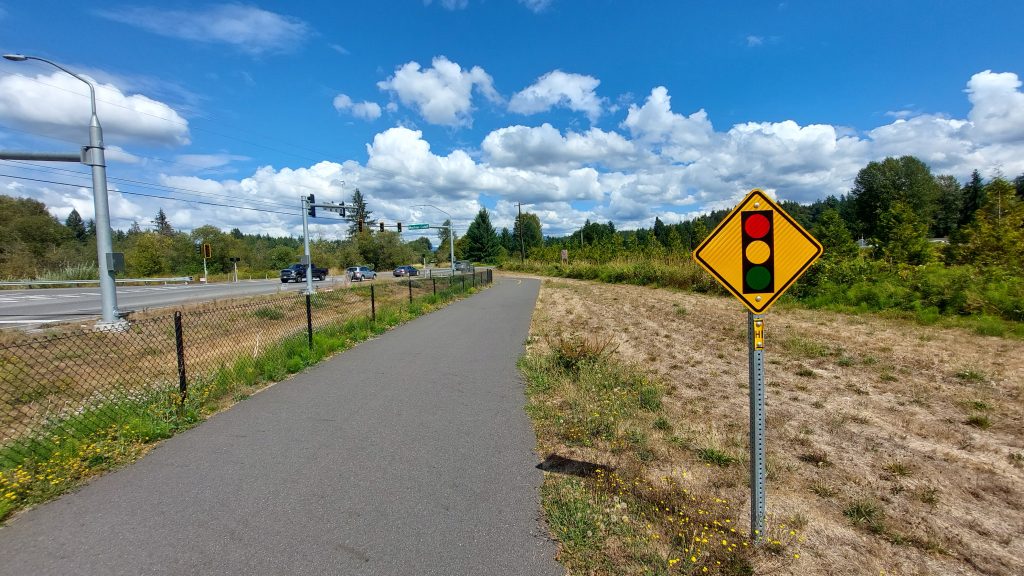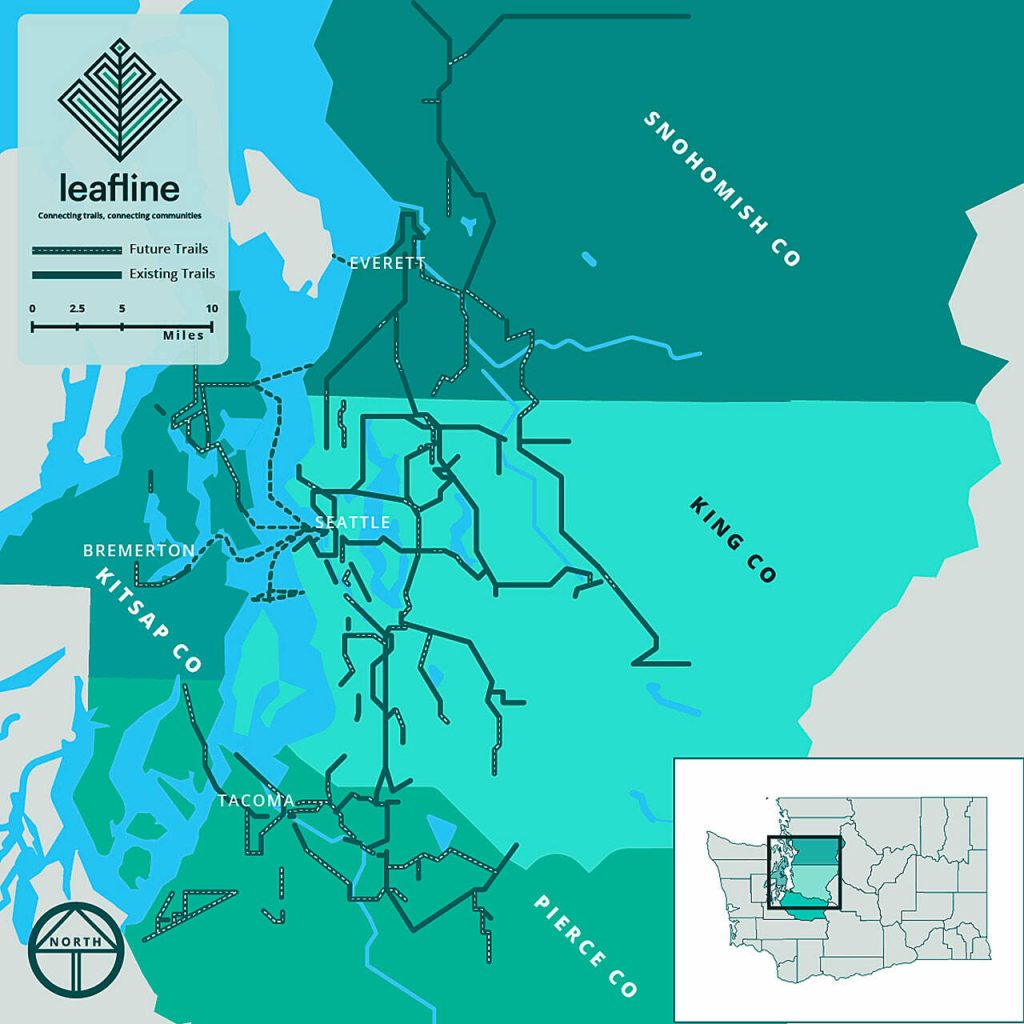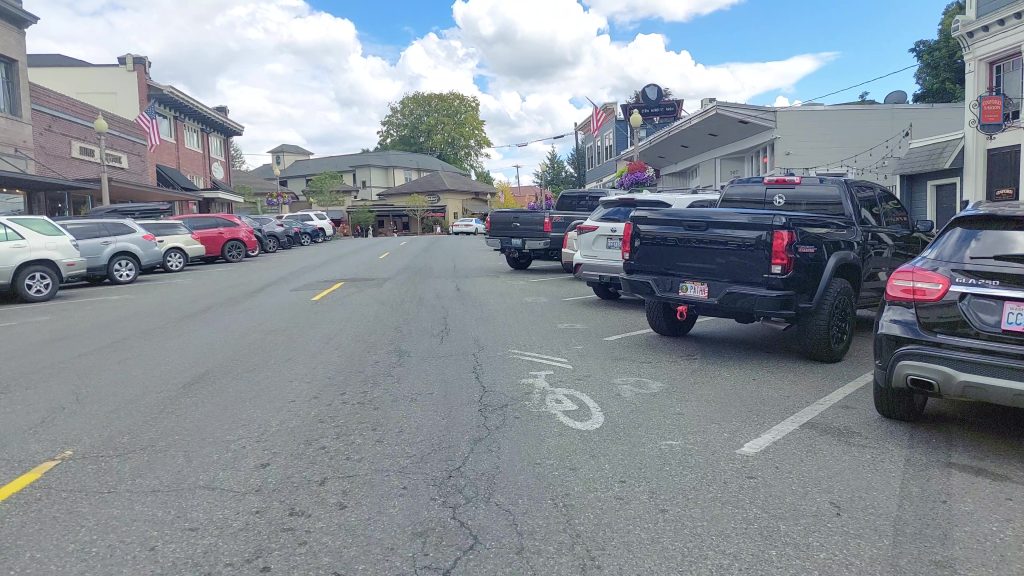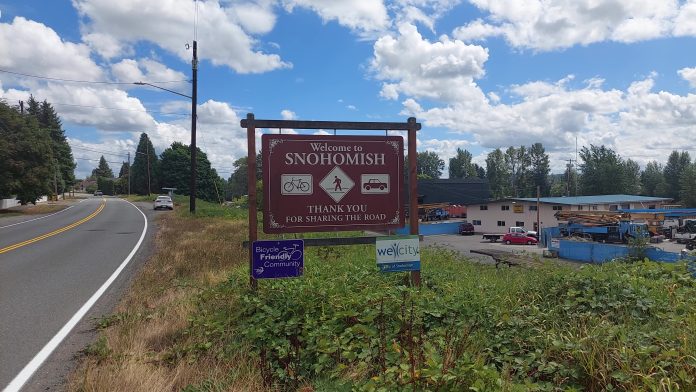Snohomish County prides itself on being a bicycle-friendly destination. The most prominent recreational trail, the Centennial Trail, stretches from 1st Street in downtown Snohomish, all the way up to the Skagit County line – 30 miles in all. First opened in 1989 to commemorate the centennial anniversary of Washington statehood, it wasn’t until 2013 that the trail was completed.
As part of the effort to improve and expand on existing bicycle infrastructure, Snohomish County is planning a southern extension of the Centennial Trail to Woodinville, where it’d link up with the Eastrail which stretches all the way to Renton. The County is currently in the process of resolving some property rights issues related to this expansion. However, there is no official timeline for the project. The county website simply lists its development stages as “TBD.”

While Snohomish County is making strides toward a better, more interconnected network of bicycle paths thanks to pressure from bicycle advocates, the City of Snohomish has a lackluster record of improving safety for cyclists. Snohomish is a city of just over 10,000 residents on the banks of the Snohomish River just east of Everett, the county seat.

The City of Snohomish’s Transportation Master Plan (2015) lists a bicycle lane on 30th Street and a short bike lane that runs for about 200 feet on one side of 1st Street. This plan is part of the city and the county’s comprehensive plan which is currently collecting comments from residents prior to its new 20-year plan due in 2024.
When asked about the future of cycling, Brooke Eidem, planning director for the City of Snohomish said, “The City is working on adopting a Complete Streets ordinance that will include a bike and pedestrian plan… While there aren’t any specific capital projects for cycling infrastructure at the moment, we’re setting up our long range plans to put the City in a better position to encourage, facilitate, and in some cases, require more transportation options for our residents.”
Eidem confessed that the town’s welcome sign was put up in May of 2012, when the City was granted Bronze Bicycle Friendly Community status by the League of American Bicyclists. The status lapsed in 2016, and was never renewed. As a starting point, renewing that honor and following through to help connect active transportation routes, would be a boost to the City.
In the City of Snohomish the on-street facilities for bicycles are currently limited to well-worn painted sharrows on a handful of incredibly busy streets, a far cry from what one might expect from a bicycle-friendly community. Protected bike lanes are much safer.

Improvements are coming, however, and in recent years, there is a new effort to expand and unify the loosely connected system of bike trails all over the Puget Sound region which is collectively being organized under an umbrella group called the Leafline Trails Coalition. Part of this effort is to also tie together modes of transit so that getting around, including to outdoor recreation, is easier by foot or bicycle.
In 2020, Snohomish County purchased land from Puget Sound Energy with the intention of building an entirely new multiuse trail. The new trail – referred to as the Snohomish River Trail – will run alongside Lowell-Snohomish Road, connecting Everett to Snohomish. According to the Snohomish County website, the project is currently in the planning and preliminary design phase, with construction slated to begin in 2027.
Bicycling trails provide excellent opportunities for recreational biking and increased connectivity between urban centers in Western Washington. Trails like these could provide some relief from car-dependent infrastructure – especially when coupled with the expansion of the micro-mobility industry over the past decade. Although, in order for any of these trails to be more than just recreational, the cities that the trails serve must recognize that bike lanes are also an absolute necessity to ensure the safety of all riders once they leave the trail.
In the Snohomish Quarterly — the official publication of the City of Snohomish — Mayor Linda Redmon noted the City wanted to look beyond the typical metrics that focused only on car throughput.
“Transportation levels of service, typically focused on traffic flow through intersections, is the only level of service standard required by law, but the City is also working on standards for levels of service for parks and multimodal transportation,” Redmon wrote. “We are seeking as much public input as possible on all of these elements because they are really important for the quality of life of our community. Help us plan for the future of Snohomish!”
Make your voice heard by going to City of Snohomish’s comprehensive plan website to complete a short survey to help decide priorities. Snohomish County also have a comment period open until December for the countywide comprehensive plan.

Adam Bartell (Guest Contributor)
Adam Bartell is an Evergreen State College alum and former Snohomish resident. He advocates for better, safer cycling infrastructure, extensive public transit, and housing policy reform.


